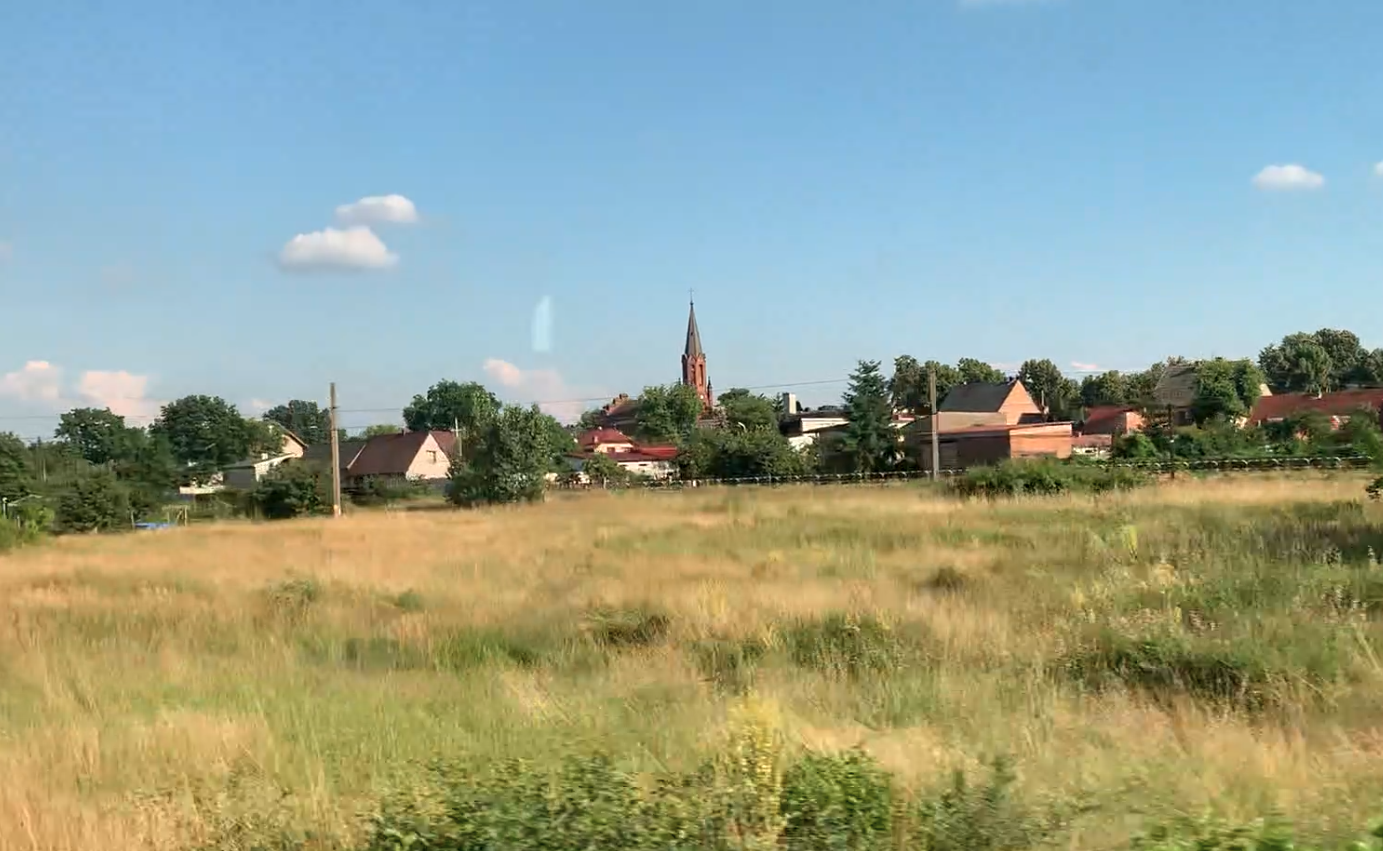Zielona Góra 2025-04-07
The city Czerwieńsk.
Czerwieńsk is a city in Poland with the rights of an urban-rural commune, in the Lubuskie Voivodeship, in the Zielona Góra district. The area of the city is 9.36 square kilometers. The population is 3,988 inhabitants (2019). Previously, the city was called Czerwieńsk Odrzański. The city is located at the intersection of provincial roads; No. 279: Zielona Góra – Buchałów – Leśniów Wielki – Czerwieńsk – Wysokie and No. 280: Zielona Góra – Czerwieńsk – Brody.
In 1939, the Germans together with their Muscovite brothers started the Second World War. As a result of it and the decision of the greats of this world, in 1945, the city was incorporated into Poland. The city rights and the office of the mayor were retained. On November 20, 1945, the settlement was deprived of its city rights and the office of the mayor. In 1957, the settlement obtained the status of an urban settlement, and in 1969, it was granted city rights again.
In 1975, the city became one of the important points on the Silesia-Porty main railway line, i.e. the Nadodrzańska main line. A facility for servicing freight trains was created. In the period 1971-1973, the Czerwieńsk Towarowy freight station was built, which is located on LK No. 273 in the north-west direction. 14 through tracks were built at the station. The Czerwieńsk Towarowy “CkT” signal box was built. Two additional tracks were led out from the station to the Czerwieńsk station. One track goes south, on the western side. Then, at the height of the bridge over the Zimny Potok river, it passes over the LK 273 line, and enters the Czerwieńsk station area. The second track also goes south, but on the eastern side and also reaches the Czerwieńsk station. Currently (2021) there are 12 tracks in operation at the freight station.
At Czerwieńsk station, the station building was built in 1870.
PKP Czerwieńsk.
Geographic coordinates 52.015N 15.412E. Elevation 51 m.

Photo description: Panorama of the city of Czerwieńsk. In the center is the church of St. Wojciech, built in 1877. In the foreground are visible electric traction poles of the railway line No. 358 Zbąszynek – Gubin.
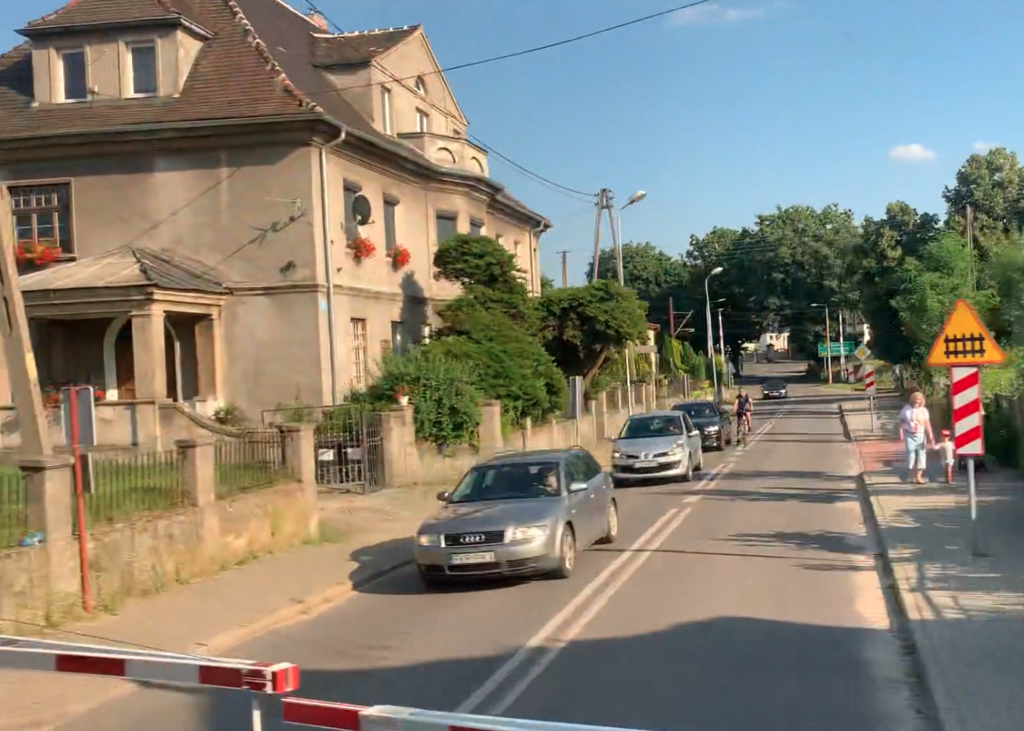
Photo description: Czerwieńsk, Kwiatowa Street and at the same time provincial road No. 280. In the background, rail-road crossing LK No. 358 Zbąszynek – Gubin.
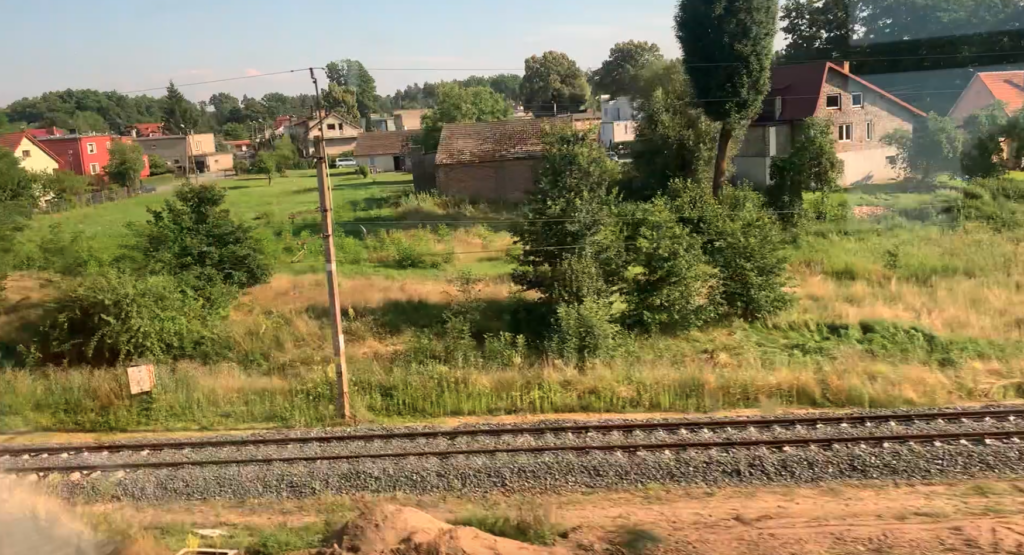
Photo description: Below, railway line No. 358 Zbąszynek – Gubin.
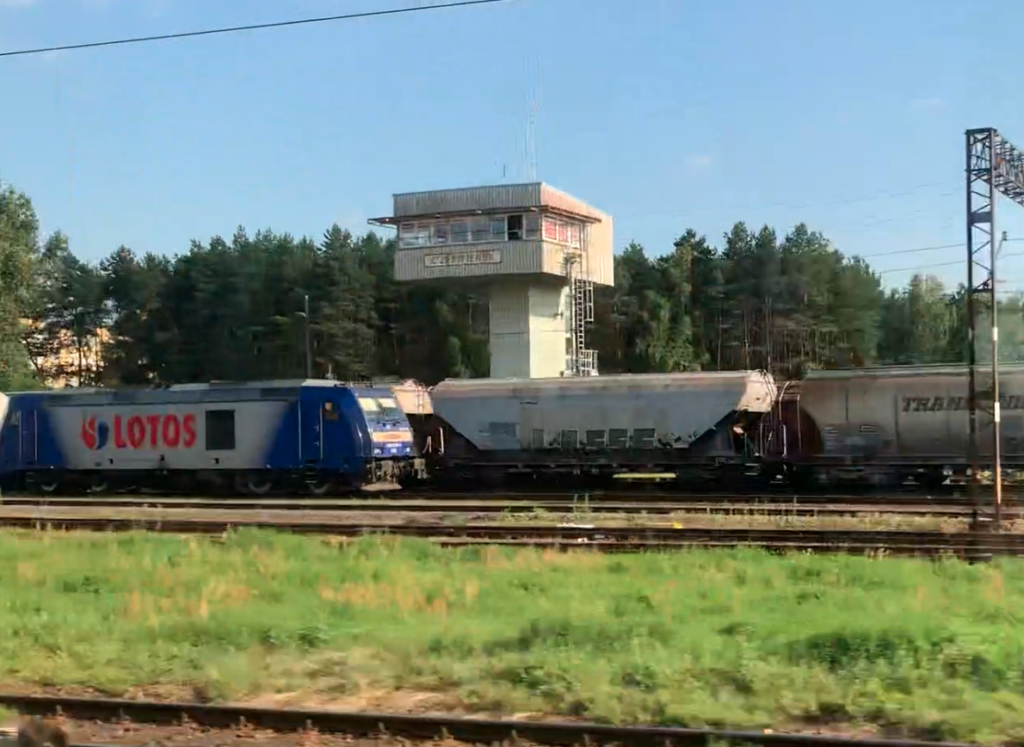
Photo description: Czerwieńsk station and railway signal box “CK”.
Line No. 273 “Nadodrzanka” from Zielona Góra bypassing the city of Czerwieńsk reaches the Czerwieńsk station, built in the north-western part of the city. Here, railway line No. 273 connects with the Zbąszynek – Guben route (No. 358 / 494). Railway line No. 273 Wrocław Główny – Szczecin Główny is a railway line in western Poland connecting Wrocław with Szczecin via Brzeg Dolny, Wołów, Głogów, Nowa Sól, Zielona Góra, Kostrzyn nad Odrą and Gryfino.
Czerwieńsk railway station was opened in 1870. Initially it was called Rothenburg a. Oder (1870–1900), then Rothenburg (Oder) (1901–1945). In Poland the station was named Czerwińsk nad Odrą (1945–1946), and from January 1947, Czerwieńsk.
The station in Czerwieńsk was built one year earlier than the station in Zielona Góra. The Gubin (Guben) – Zbąszynek route and further to Poznań was built by the Marchijsko – Poznań Railway Company. Due to the topography of the terrain, the construction of this line was simple and cheaper than the route through Zielona Góra.
In 1874, the route from Czerwińsk was continued towards Szczecin. This delay was caused by the need to build a railway bridge over the Oder in Nietkowice. Czerwieńsk became an important railway junction on the east-west (line No. 358) and south-north (line No. 273) directions. Line No. 358 and LK No. 273 intersect at Czerwieńsk station. Both routes were built as double-track, but currently the Zbąszynek – Gubin route is a single-track route. It was not until 1875 that both routes were connected by switches, which allowed trains to change routes from one line to another. Remember that both routes belonged to different owners. The use of foreign routes was regulated by appropriate fees. Railway line No. 273 runs from the northern part of the station. This line is double-track, electrified. Railway line No. 358 runs from the southern part of the station. This line is single-track, electrified.
In 1870, a station similar to the one built in Zielona Góra Główna was built here. It is also brick and two-story. The station building is located in the inter-track area, i.e. it is an island station. That is why the main entrance to the building is located at the top of the station. During one of the renovations, the station was plastered. The station was built on the plan of an elongated rectangle, it is multi-body, covered with gable roofs, with a small angle of inclination. The main entrance is from the east, and on the west side there are representative rooms for important guests. Many Germanic stations were built this way, such as in Toruń and Piła.
In March 1945, Czerwieńsk and Zielona Góra were occupied by Soviet troops. Many sections of track were converted to broad gauge, and in 1945, some of them were dismantled and taken to the CCCP as “trophy” tracks. After World War II, the importance of railway routes changed. Those important to the Germans became less important in the PKP, while others gained in importance. This resulted from the change of state borders imposed by the CCCP and accepted by Western Europe. Due to the destruction of the railway bridge over the Oder in Nietkowice and railway and road bridges also over the Oder in the town of Wyszyna. It was decided to rebuild the Wyszyna railway bridge first, on route No. 358 to Zbąszynek.
After the war, Czerwieńsk station found itself on the Poznań – Zielona Góra railway route. However, due to the track layout, the train head had to be changed at the station and the locomotive had to go around the wagon set. This of course affected the longer stop of passenger trains at the station. This was the case until the Pomorsko – Przylep railway link was built, and specifically line No. 436 Czerwieńsk East – Czerwieńsk South.
In 2018, Czerwieńsk station served up to 150 passengers per day. PolRegio trains and some InterCity trains stop at the station. The station is controlled from one signal box with CK located in the southern part of the station. The remaining old signal boxes have been decommissioned. A large PKP Cargo Rolling Stock Repair Plant operates in Czerwińsk.
Czerwieńsk Platforms Station. Platform location – line no. 273: Platform 1, single-edge, 310 m long. Platform 2, single-edge, 320 m long. Platform location – line no. 358: Platform 3, single-edge, 305 m long. Platform 4, single-edge, 270 m long.
The Pomorsko – Przylep railway link (line No. 436 Czerwieńsk East – Czerwieńsk South).
The idea of building the link was born in the early 1950s. When the railway bridge over the Odra in Nietkowice had not yet been rebuilt. However, after the bridge had been rebuilt, the project was put aside. The plans were dusted off in 2009. The tender in the design and build system was announced on December 18, 2009. The competition was won by the Infrakol consortium. The investment value was PLN 70 million. The construction time of the link and modernization works on the existing tracks was set at 30 months. The link is single-track, 2.650 km long. A branch station Czerwieńsk South and a second Czerwieńsk East were built on the line. The 60E1 non-contact rails were used on Ps93/94 pre-stressed concrete sleepers with SB4/7 type fastening. The soil and water conditions were very unfavourable, which required reinforcement of the base of the embankments. Two viaducts were built over the rivers, which also serve as ecological crossings for wild animals. A rail-road crossing was built along provincial road No. 279. The crossing is category B, with half-barriers closed automatically by traction units. The connecting line is an electrified line. The transformer station is at the Czerwieńsk Południe branch post. The branch posts are automatic and remotely controlled from the control room at the Czerwieńsk station. The trees were cut down in February 2011, and after obtaining the appropriate permits, construction work began in May 2012. Construction work was completed on 5 June 2013, with a ceremonial opening of the connecting line with the participation of railway and local authorities. Rail traffic began with a change to the timetable, which was introduced on 9 June 2013.
Railway line No. 370 Zielona Góra – Żary.
Railway line No. 370 Zielona Góra – Żary, was launched on August 1, 1904. The line is 53,300 km long. It is a single-track, non-electrified line. It has served and serves freight and passenger traffic. The line runs through the following towns: Słone, Buchałów, Letnica, Koźla, Bogaczów, Nowogród Bobrzeński, Dabrowiec, Bieniów, Lubanice, Grabik.
Former railway line Zielona Góra – Szprotawa. Szprotawa Railway.
Szprotawa Railway was a railway line that connected Zielona Góra – Szprotawa. The route was single-track with a length of 50,700 m. The line was built in the period 1910 – 1911. The ceremonial opening took place on October 1, 1911. The Szprotawa Railway Station was built south of the current Zielona Góra Główna railway station. The idea of building the Szprotawa Railway arose in 1897 among industrialists who wanted to transport their goods faster and cheaper. They managed to obtain land on which the railway tracks were laid. In 1908, a main investor was found, specializing in the construction of local railways. The local governments of Zielona Góra, Kożuchów, Szprotawa and Żagań participated in financing the investment. A joint-stock company was established to implement the plan. The rolling stock was supplied by the Beuchelt factory. At the beginning of its operation, the company had four steam locomotives, 20 freight wagons and 6 passenger wagons.
The Szprotawa Railway line initially ran westwards, then heading south, bypassing the city from the west. It then ran southwards. The main village on the route was Stypułów, where the line crossed the Żagań, Kożuchów, Nowa Sól route. The railway was 50.700 km long and led through villages located south of Zielona Góra: Jędrzychów, Ochla, Jarognewice, Radwanów, Broniszów, Dębiczka, Wichów, Chotków, Stypułów, Siecieborzyce, Witków, Kartowice.
Freight and passenger trains ran on the route. Due to the use of this railway by small traders and tourists, the railway was called the “berry railway”. In 1945, the Soviet front passed and the line was dismantled by Soviet “trophy” units. On the railway map from 1948, the line is marked as dismantled and had No. 323d.
A small fragment of the line remained in the city of Zielona Góra until 2001. This line was used by factories in the city, which had their own railway sidings. For example, a brewery used the line. This part of the line was renovated and used until 2000. Existing photos show concrete sleepers from the 1970s.
In 2014, the Szprotawa Railway Enthusiasts Club brought an original T3 (TKh1) steam locomotive from 1909, a type of steam locomotive that serviced the Szprotawa railway in the period 1911-1945. The steam locomotive was built by the Beuchelt factory in Zielona Góra.
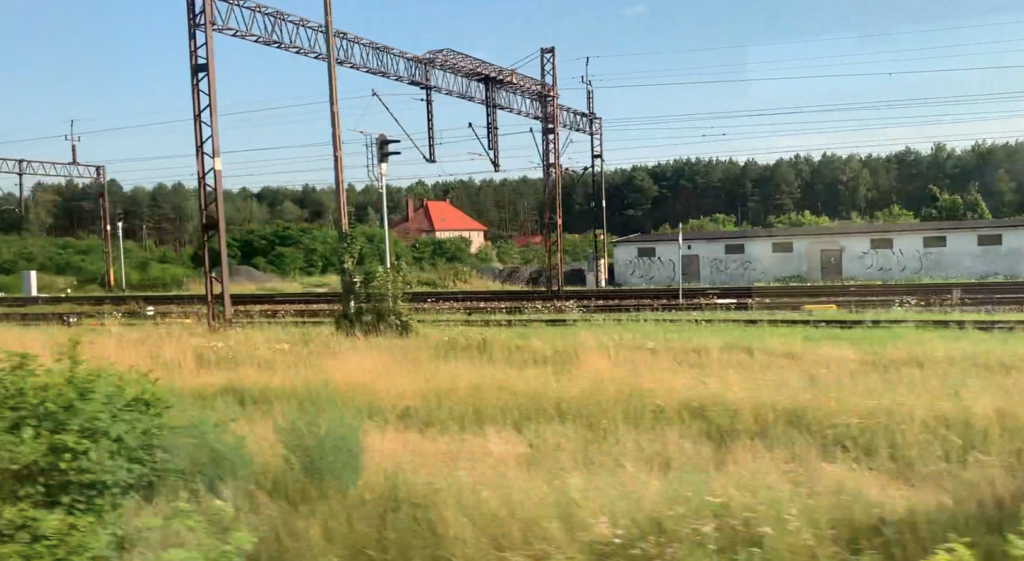
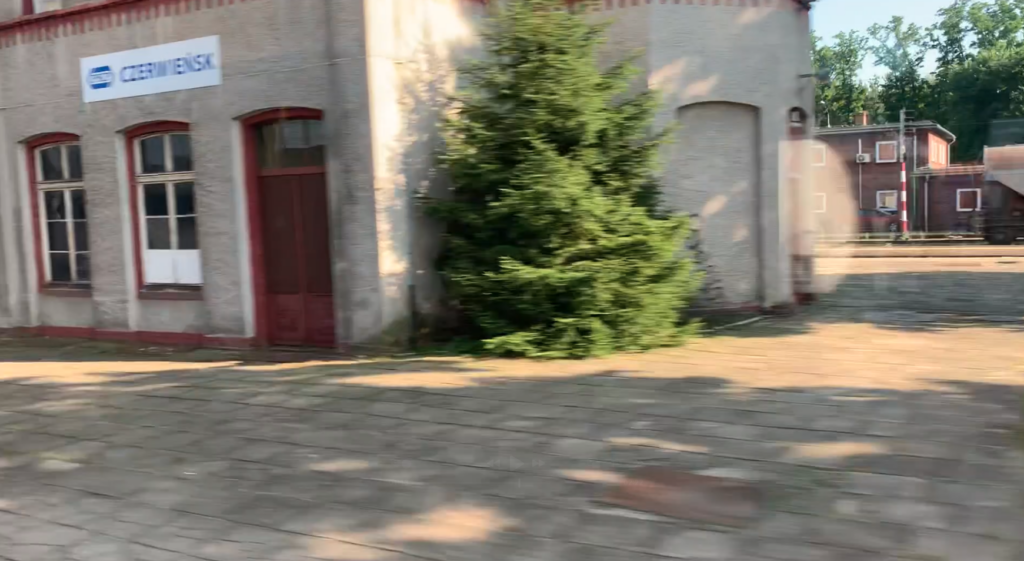
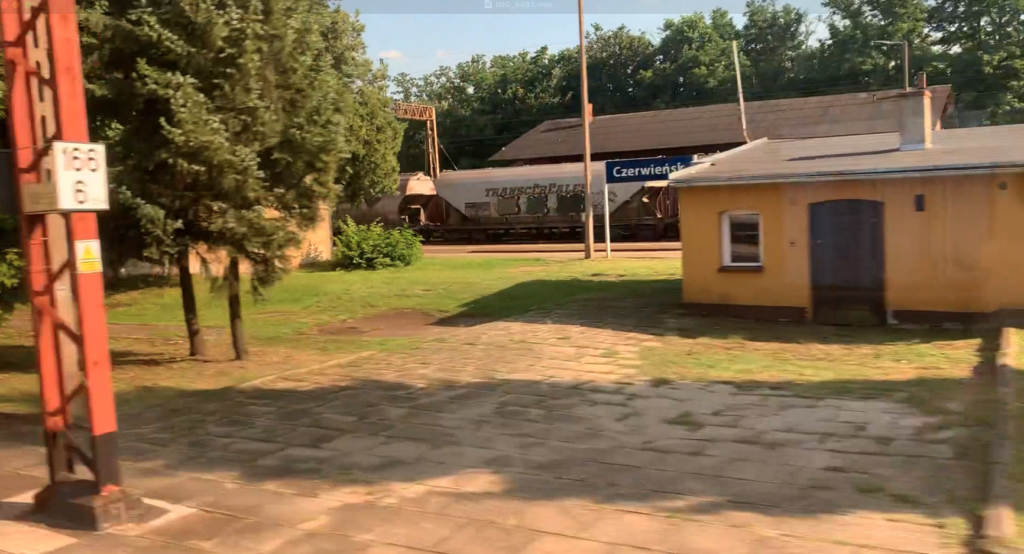
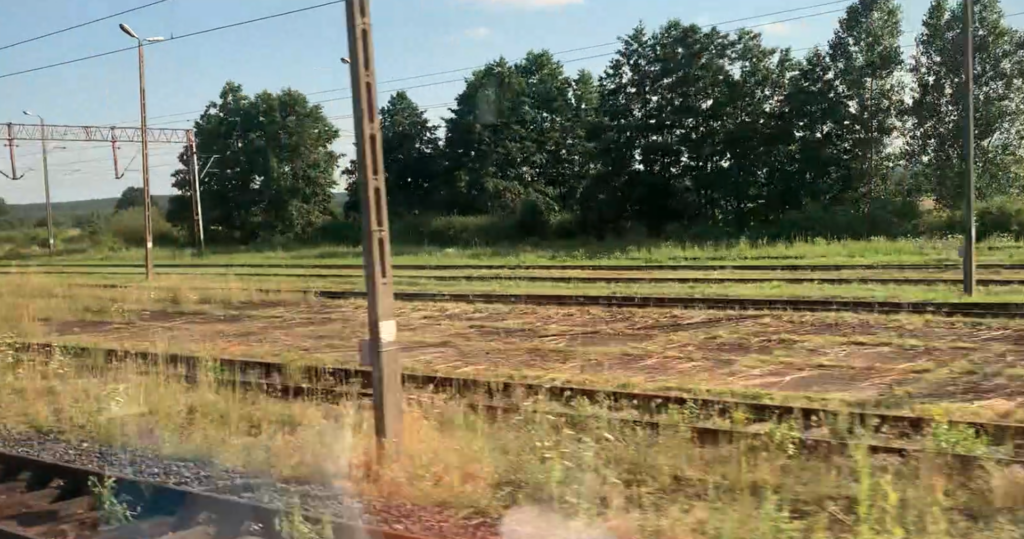

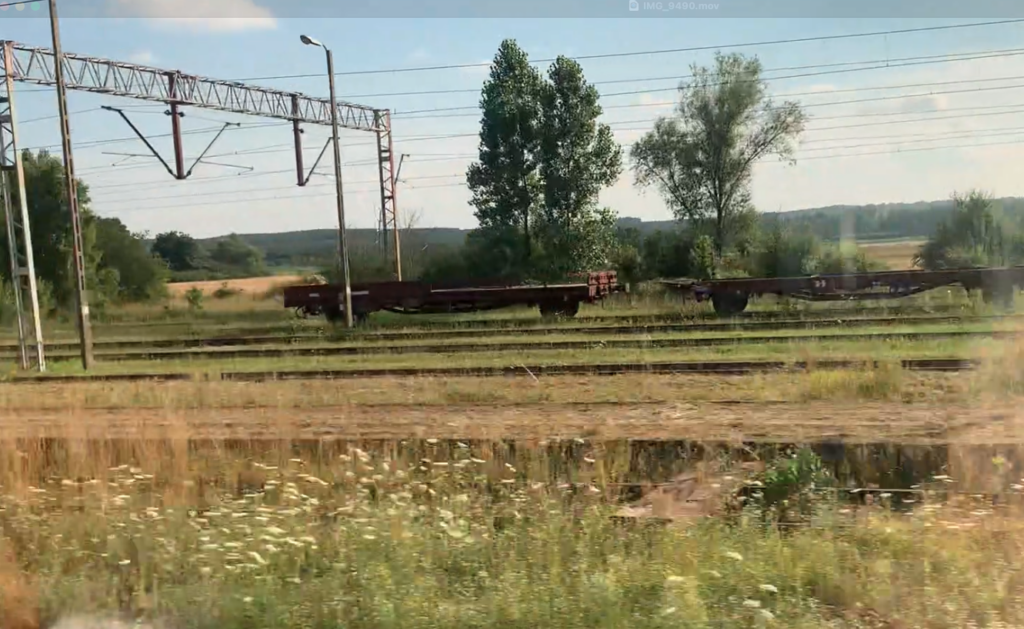
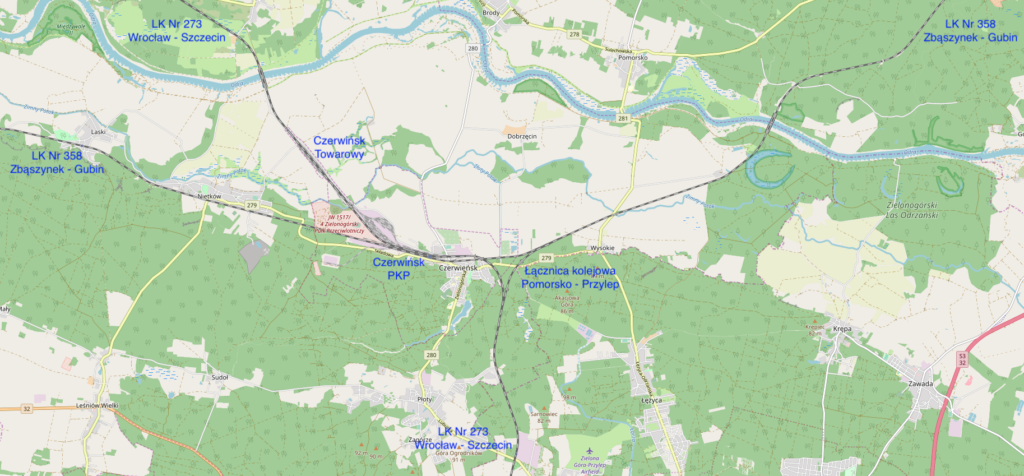
Written by Karol Placha Hetman
